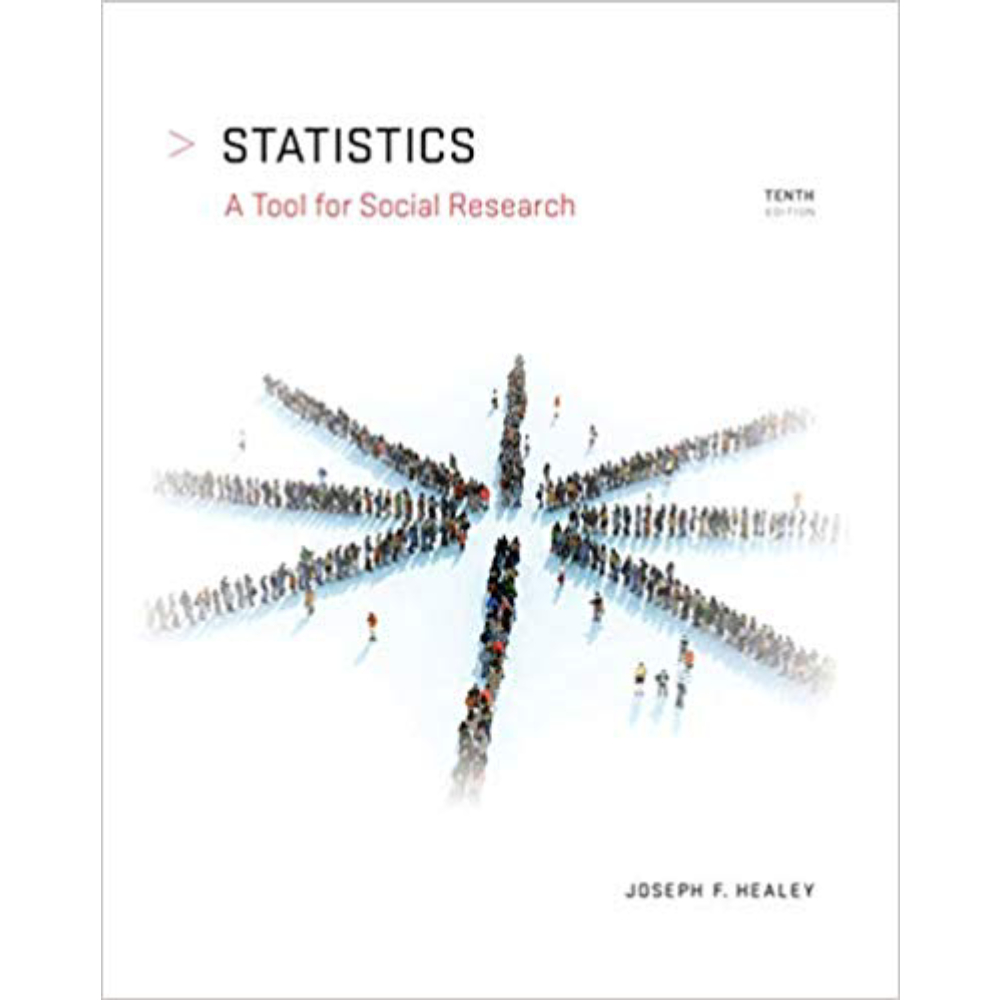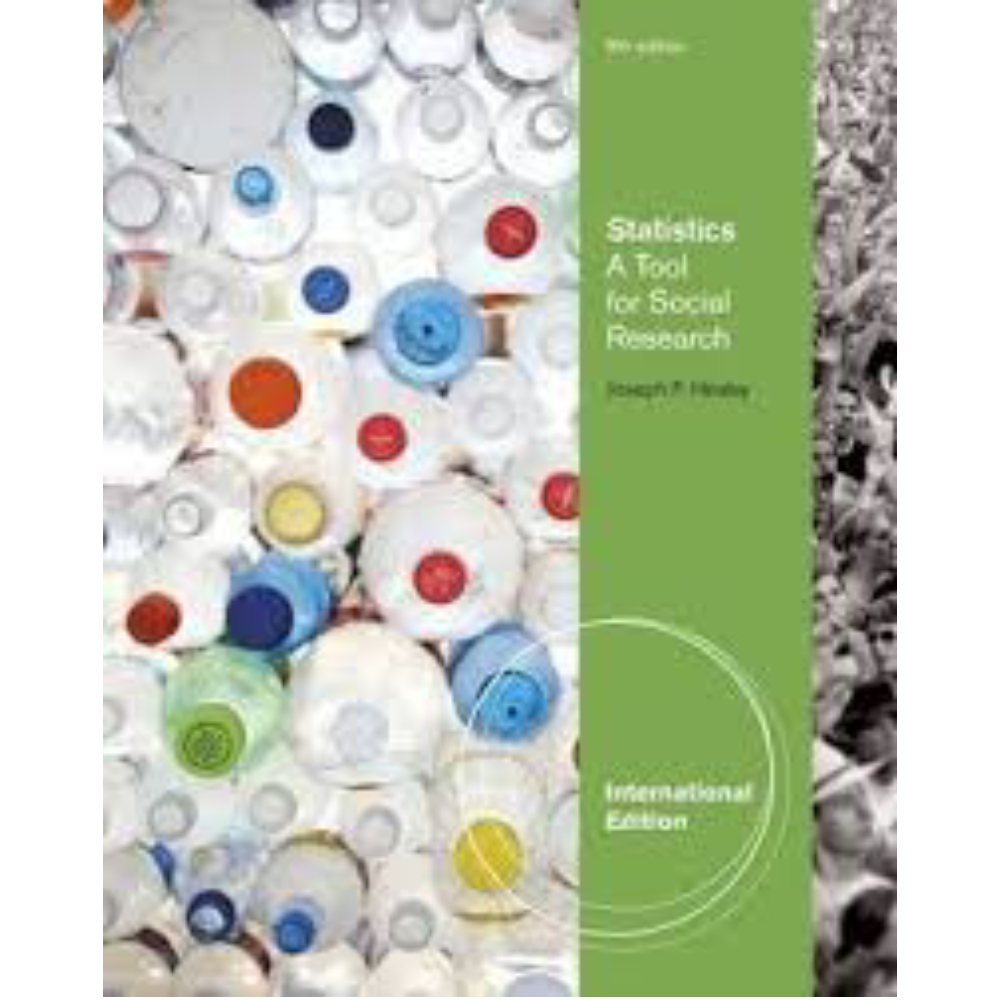Statistics A Tool For Social Research International Edition 9th Edition By Joseph F. Healey – Test Bank
$55.00
Statistics A Tool For Social Research International Edition 9th Edition By Joseph F. Healey – Test Bank
You will receive this product within 24 hours after placing the order
Statistics A Tool For Social Research International Edition 9th Edition By Joseph F. Healey – Test Bank
Chapter 11
HYPOTHESIS TESTING IV
Chi square
Multiple Choice Questions
The popularity of the Chi Square test is largely due to
a. easy computations
b. the fact that it can be computed only for interval-ratio level variables
c. the need to assume a normal sampling distribution
d. the relative ease with which the model assumptions can be satisfied
Answer: d Page: 272 LO: 3
The chi square test is frequently used because it is relatively easy to satisfy the model assumptions (step 1 of the five-step model). These assumptions require, in the case of chi square,
a. a normal population distribution
b. no assumption about the shape of the sampling distribution
c. expected frequencies of equal value
d. a difference in expected and observed frequencies
Answer: b Page: 272 LO: 3
Which assumption about level of measurement is made for the Chi square test?
a. all variables are at least ordinal in level of measurement
b. all variables are at least interval-ratio in level of measurement
c. all variables are nominal in level of measurement
d. at least one variable must be ordinal in level of measurement
Answer: c Page: 272 LO: 3
Chi square is one of a class of statistics called
a. nonparametric
b. parametric
c. semi-parametric
d. parametrically symmetrical
Answer: a Page: 272 LO: 3
Unlike other tests of significance, Chi square easily handles situations in which
a. the variables of interest have more than two categories or scores
b. the variables of interest have less than two categories or scores
c. variables are all ordinal in level of measurement
d. degrees of freedom exceed 100
Answer: a Page: 272 LO: 3
To conduct a chi square test, the variables must first be organized into a
a. univariate table
b. bivariate table
c. list, which is then ranked
d. frequency distributions
Answer: b Page: 273 LO: 2
Unlike other tests of significance, chi square is based on
a. a bivariate table
b. means as well as proportions
c. continuous variables only
d. ordinal-level variables only
Answer: a Page: 273 LO: 2
A bivariate table in which both variables have three categories has
a. three cells
b. six cells
c. nine cells
d. thirty-three cells
Answer: c Page: 273 LO: 2
A bivariate table in which one variable had three categories and the other variable had four categories would have
a. four cells
b. six cells
c. nine cells
d. twelve cells
Answer: d Page: 273 LO: 2
In the context of chi square, variables are independent if
a. they are related
b. cause and effect can be proved
c. the obtained chi square falls in the critical region
d. the score of a case on one variable has no effect on the score of the case on the
other variable
Answer: d Page: 274 LO: 3
Which pattern of cell frequencies in a 2×2 table would indicate that the variables are independent?
a. all cell frequencies are exactly the same
b. there are a different number of cases in each of the four cells
c. only the cells in the top row of the table have cases in them
d. there are no cases in any cell
Answer: a Page: 274 LO: 3
In a 2×2 table, all cell frequencies are exactly the same. This is consistent with which of the following conditions?
a. the variables are both continuous
b. the sample is a cluster sample
c. the variables are independent
d. the variables are dependent
Answer: c Page: 274 LO: 3
If two variables are independent, the cell frequencies will be
a. exactly the same
b. concentrated in only two of the cells
c. less than the expected frequencies
d. determined by random chance
Answer: d Page: 274 LO: 4
In the chi square test of hypothesis, the null hypothesis states that the variables are
a. dependent
b. independent
c. causally related
d. non-random
Answer: b Page: 274 LO: 4
The Chi square test is based on the assumption that
a. the variables are dependent
b. the expected frequencies are not produced by random chance
c. samples are non-random
d. the null hypothesis is true
Answer: d Page: 274 LO: 4
When the null hypothesis in the chi square test for independence is true, there should be
a. large difference between the observed frequencies and the expected frequencies
b. little difference between the observed frequencies and the expected frequencies
c. no difference between the observed frequencies and the marginals
d. no difference between the row and the column marginals
Answer: b Page: 274 LO: 4
Cell frequencies computed under the assumption that the null hypothesis is true are called
a. observed frequencies
b. experimental frequencies
c. expected frequencies
d. random frequencies
Answer: c Page: 274 LO: 4
In the Chi square test, expected frequencies are computed by
a. adding the observed frequency to N and subtracting the number of cells
b. multiplying the observed frequencies by the row marginals and dividing by degrees of freedom
c. multiplying the proper row and column marginals for each cell and dividing by N
d. adding the proper row and column marginals together and dividing by N
Answer: c Page: 275 LO: 4
If the row and column marginals of the expected frequencies are not equal to those of the observed frequencies
a. an arithmetic error has occurred
b. Yate’s correction must be applied
c. the null hypothesis must be rejected
d. switch to the ANOVA test
Answer: a Page: 276 LO: 4
The row and column marginals for the expected frequencies are always ________ those of the observed frequencies.
a. greater than
b. the same as
c. less than
d. different from
Answer: b Page: 276 LO: 4












Reviews
There are no reviews yet.